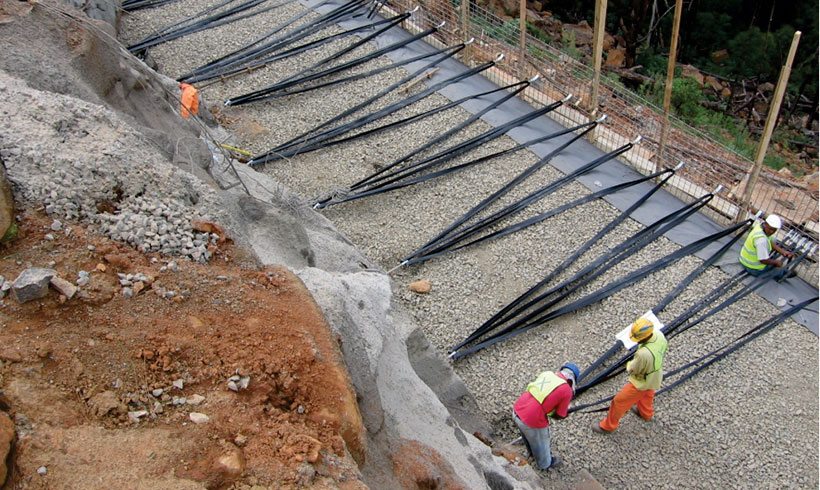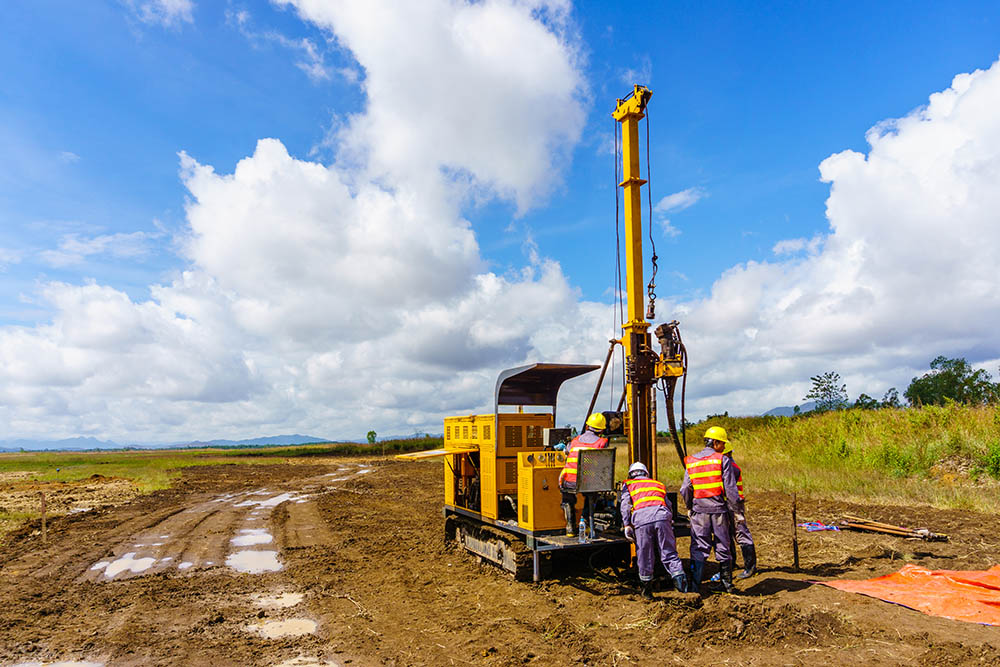Discovering the Basic Concepts and Applications of Geotechnical Engineering for Sustainable Framework Advancement
The junction of geotechnical engineering and lasting framework advancement provides a compelling possibility to improve both design efficiency and ecological obligation. By understanding vital concepts such as dirt technicians, site characterization, and structure style methods, engineers can create options that are not just effective yet also decrease ecological impacts. The assimilation of sustainable practices into geotechnical projects raises inquiries concerning resource application and lasting resilience. As we check out these ideas, the implications for future facilities tasks call for mindful consideration, specifically in an era progressively specified by ecological challenges.
Secret Concepts of Geotechnical Design
Comprehending the key principles of geotechnical engineering is important for designing lasting framework (all about geotechnical engineering). This technique focuses on the interaction between soil, rock, and frameworks, playing a vital function in the security and efficiency of design tasks. The primary principle is the analysis of subsurface problems through website investigations, which provide important information about dirt homes, stratification, and groundwater degrees
Another vital principle is the application of effective stress theory, which aids engineers comprehend just how soil behavior changes under differing tons. This understanding is critical for assessing the bearing ability of structures and making sure that frameworks can withstand both static and vibrant pressures.
In addition, the concepts of soil-structure interaction and slope stability are essential to geotechnical style, as they notify decisions on the positioning and design of retaining inclines, embankments, and wall surfaces.
Finally, geotechnical designers must take into consideration sustainability by advertising the usage of locally sourced products, reducing ecological effect, and enhancing styles for durability. By adhering to these principles, geotechnical engineering contributes significantly to the production of sustainable and resistant facilities that meets the needs of culture while shielding the atmosphere.
Dirt Mechanics and Its Significance
Soil technicians acts as the foundation of geotechnical design, providing the clinical principles needed to examine the habits of dirt under various problems. Comprehending soil technicians is important for forecasting how soil will react to tons, modifications in moisture material, and various other environmental factors. This expertise permits designers to develop frameworks that can hold up against the stress put in by the soil and guarantee security and safety.
The research study of dirt auto mechanics includes various elements, consisting of soil category, shear compressibility, stamina, and leaks in the structure. These factors influence the style of structures, retaining walls, and other geotechnical frameworks, making it important to analyze soil residential properties precisely. The shear stamina of dirt straight influences the security of slopes and excavations, while compressibility affects negotiation predictions for buildings.
Moreover, dirt technicians plays an essential function in sustainable facilities advancement. By understanding the dirt's behavior, designers can decrease environmental impacts, enhance product use, and improve the long life of structures. This integration of dirt mechanics right into geotechnical design practices not just makes sure safety and security but likewise adds to the general sustainability of building and construction jobs, promoting reliable resource administration and ecological stewardship.
Website Characterization Methods
Efficient go to this site website characterization strategies are essential for collecting crucial information concerning subsurface conditions before building and construction - all about geotechnical engineering. These strategies provide valuable understandings right into soil buildings, rock developments, groundwater levels, and possible geohazards, consequently educating job style and mitigating dangers
One commonly used technique is piercing, which permits direct sampling of dirt and rock layers. This can be enhanced by in-situ testing, such as Standard Penetration Tests (SPT) and Cone Infiltration Examinations (CPT), to evaluate soil toughness and stratification. Geophysical techniques, consisting of seismic refraction and electric resistivity surveys, make it possible for non-invasive evaluation of subsurface materials and frameworks, supplying a broader viewpoint on geological problems.
Additionally, lab screening plays a crucial role in analyzing dirt examples obtained from drilling. Tests such as grain size analysis, Atterberg limitations, and triaxial shear examinations yield critical data on dirt behavior under numerous loading conditions.
Including these website characterization strategies not only boosts the understanding of website problems yet also supports lasting facilities development by making certain that tasks are developed with appropriate safety margins and performance specifications. Thus, a comprehensive site characterization is important for informed decision-making in geotechnical design.
Structure Design Strategies
Foundation design strategies are essential for making certain the stability and durability of frameworks in different geotechnical contexts. These techniques start with a thorough website examination, that includes dirt testing and evaluation to determine the physical residential properties of the subsoil. Comprehending dirt habits under tons is important for picking the proper structure type, whether deep or superficial.
Shallow structures, such as spread grounds or floor covering structures, are commonly utilized when ideal soil layers are offered near the surface area. Conversely, deep structures, such as stacks or drilled shafts, are used in situations where surface dirts are poor to support structural tons.

Sustainable Practices in Geotechnical Design
The combination of lasting techniques in geotechnical engineering plays a crucial function in boosting the economic and environmental feasibility of facilities jobs. By focusing on resource effectiveness and minimizing environmental influences, designers can add to the advancement of resistant framework systems.
One key lasting technique involves the use of alternative materials, such as commercial by-products and recycled accumulations, which can minimize the need for virgin resources and reduced Homepage carbon discharges. In addition, dirt stablizing methods, including the application of bioengineering techniques, improve dirt properties while advertising environmental balance.
Moreover, the implementation of innovative geotechnical modeling and monitoring technologies permits much better prediction and monitoring of ground conditions, resulting in enhanced design remedies and resource usage. These innovations likewise assist in the evaluation of long-lasting efficiency, making certain that structures stay useful and safe over their lifespan.

Conclusion
In final thought, the principles and more info here applications of geotechnical design play a crucial function in lasting infrastructure growth. Emphasizing dirt mechanics, site characterization, and cutting-edge foundation layout techniques enhances the strength and efficiency of frameworks.
By understanding essential concepts such as soil mechanics, site characterization, and structure design strategies, engineers can produce solutions that are not only reliable but also decrease ecological impacts.Dirt technicians offers as the foundation of geotechnical engineering, supplying the scientific concepts needed to evaluate the actions of dirt under numerous problems. Recognizing soil auto mechanics is crucial for forecasting just how soil will respond to loads, modifications in moisture content, and various other environmental aspects.The study of dirt technicians incorporates different elements, consisting of dirt classification, shear permeability, compressibility, and strength. These variables affect the style of structures, keeping wall surfaces, and other geotechnical structures, making it necessary to evaluate dirt homes properly.